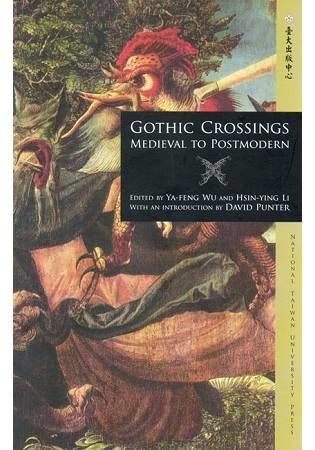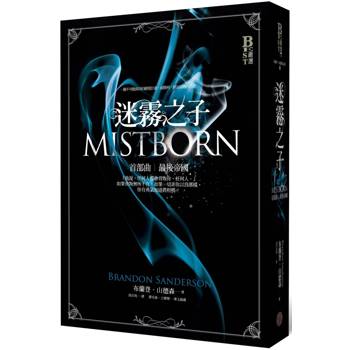序言
Introduction
What is Gothic? Or perhaps, to put the question in wider terms, what, when, where and why is (or was) Gothic? Especially over the last thirty years—and to some extent before that—a hugely wide range of answers has been offered to these questions by critics, reviewers and cultural commentators alike, and the search for adequate definitions, or at least descriptions, shows no sign of diminishing in energy or range.
As for the “what”: the most obvious way to view Gothic would be in terms of a specific range of motifs, which recur throughout the range of works we conventionally regard as the “original Gothic,” by which I mean a specific group of novels published in Britain in the late eighteenth and early nineteenth centuries. Principal among these would be the setting, very frequently an enclosed space: the castle, the monastery, the convent. Time and time again, from this “original” Gothic of writers like Ann Radcliffe to the much later short stories and novels of Angela Carter and Iain Banks, these settings are used and reused, invented and reinvented. Very often they are further linked with what we might call the motif of the “persecuted maiden”: the innocent young girl who is pursued through these dark, claustrophobic corridors by some unspecified yet dangerous force. Above all, these heroines are haunted: sometimes haunted by their own fears, sometimes by an all too real menace in the shape of an evil baron, or a wicked monk, or some wilder but often only half-glimpsed figure of monstrosity. Over the years, these pursuing figures have sometimes crystallized into images which have become legends or myths in their own right. The two most outstanding, of course, are
Frankenstein’s monster, the source of endless filmic remakes, and the vampire, an image of danger which never seems to go away, as we can see recently in the fictions of Anne Rice, Stephenie Meyer and many others.
When was, or is, the Gothic? Clearly there is the “original” Gothic period, not only in Britain but in Europe more generally. It approximately coincides with the heyday of romanticism, in the late eighteenth and early nineteenth centuries, but in fact the wider history of Gothic is vastly more complex than that. There are, for example, the Goths themselves to be considered, the collection of Northern European tribes who are best known for their participation during what we now know as the Dark Ages in the sack of Rome and thus the ending of the Roman empire, and it is probably from historical recreations of this crucial moment of the overwhelming of a civilization that one of the most important oppositions within Gothic emerges, namely that between civilization and barbarism. But “Gothic” is, of course, also a term which we apply, perhaps paradoxically, to one of the supreme achievements of Western civilisation, namely the European cathedral architecture of the Middle Ages. Here Gothic stands for a certain grandiloquence, for an aspiration, in this case in the service of God, although later considerations of Gothic architecture tend to revise this view of quite what these aspirations were really about.
And in fact, the Gothic novel itself did not emerge without its own antecedents at the end of the eighteenth century; for many years previously, writers had been expressing an opposition to the fixed, neoclassical orthodoxies of the earlier part of the eighteenth century. Even the revival of Shakespeare can be regarded as an aspect of the Gothic, insofar as it was accompanied, and perhaps caused, by a revaluation of kinds of writing which escaped and transcended the straitjacket of the classical unities and provided the underpinning for a vernacular literature. Moving on through history, we can then find any number of ways in which, after the romantic period, the Gothic continued to be reinvented. The most obvious example is the “Gothic revival” of the mid-nineteenth century, of which, in Britain, the outstanding example is the Houses of Parliament, designed and built in true neo-Gothic style. And after that, and continuing to the present day, there has been a continuous reworking in fiction if not in architecture of key Gothic perceptions, perhaps most notably in the works of writers like Oscar Wilde, H.G. Wells, Robert Louis Stevenson and Bram Stoker at the turn of the nineteenth and twentieth centuries, but carrying on through the later history of the ghost story, the vampire tale and now to an entirely new subgenre known, in the bookshops at least, as “dark romance.”
Arguably one could say that these later manifestations are not as clearly “Gothic” as they are to do with the supernatural; but this would be to ignore the fact that there has always been a significant overlap between the Gothic and the supernatural. If the Gothic novel did indeed arise in part from a rejection of the early realist novel and an attempt to return to or revivify earlier modes of romance, which is essentially what Horace Walpole claims in what has often been called the earliest work of Gothic fiction, The Castle of Otranto, then the supernatural was crucial to this phenomenon, and has remained so ever since.
Where was the Gothic? Again, there are many possible answers to this question. The most obvious one would be that we think of it in terms of a specifically British—English but also very much Scottish—tradition, but of course this is not the whole of the situation. The British writers themselves were often deeply indebted to the German school of terror novels known as the Schauerromane, and meanwhile there was also a partly separate tradition of Gothic in America, often said to have originated with Charles Brockden Brown and proceeding into the works of Poe, Hawthorne and many later writers. In recent years far broader definitions have appeared. If, it is suggested, the Gothic is a way of codifying and addressing ancient fears and anxieties, then part of the essence of it has to do with folk legend, with myth, with the many different ways in which different societies deal with those fears, and thus cultures as different as the Japanese, the West African or the Mexican can be seen to have traditions which can be loosely described as Gothic. Even more recently, it has also been said that these connections have changed and tightened: as European Gothic has inexorably spread to other parts of the world, through film, video, television and related media as much as the written book, then there has been cross-fertilization between these forms and those of the “native” cultures. At this point one might even say that the Gothic has become truly global; there are very many local traditions of, for example, the vampire, the zombie or the haunted house, but now many of these have merged with images promoted and disseminated by hegemonic cultures and produced new hybrid forms.
Why was the Gothic? This is perhaps the most complicated question of all, and there is certainly no simple answer. In terms of the original British Gothic, it would be possible to begin from a sociological approach. The rise of the novel in the eighteenth century coincided, as Ian Watt and others have proved, with the rise to power of the bourgeoisie; but within the bourgeoisie there remained unresolved fears of the feudal aristocracy which they had supplanted, and it is these fears, it could be said, which recur in the essentially feudal settings and concerns of Gothic—and even now that it might reasonably be considered that in the twenty-first century these fears should have been allayed, the fact remains that many settings for contemporary Gothic films reproduce in one form or another these ancient sites of terror.
Or one could provide an answer in terms of religious anxieties. Most of the original fictions have their settings not in Britain but in Southern Europe, particularly in Italy or Spain, and this has been seen as a reflection of an almost pathological fear on the part of Protestant Northern Europe of the power and reputation of the Catholic South. Northern Europe is seen as a place of sanity and reason; the South as in thrall to superstition and the horrors of Inquisition; Protestantism is seen as the fruit of a kind of religious enlightenment; Catholicism as a promulgator of dark forces, preoccupied with the vainglory of priests and with sin and the devil. Thus many Gothic novels, although they appear to be focused on danger and darkness, in fact end up by vindicating a Protestant view of the world and by punishing those who seek to scare us with wild tales of demonic possession and wailing ghosts.
Or one could look at Gothic from a more psychological point of view, which would loosen it from its more immediately historicized social, cultural or religious settings. One of the crucial terms here would be repression. A central aspect of psychoanalysis is the claim that, as Freud puts it, from the unconscious nothing ever goes away. In other words, when we try to exile or excise fear, all we succeed in doing is pushing it further down into the unconscious, and there will therefore always come a moment of equal and opposite reaction, when these repressed materials burst back to the surface. We may think we have ceased to believe in ghosts, but in fact a belief in the return of the dead is too deeply laid in the human psyche to be removed and we continue to long for stories which will engage us again with these ancient preoccupations. Thus the Gothic would signify a moment, or series of moments, when these repressed materials return, just as, in so many of the novels and films, the dead themselves return: indeed the whole motif of the return of the living dead, from George Romero and Stephen King onwards, might well be seen as a demonstration of what happens when we try to repress material which is too strong for us and which is bound to break its chains and stumble up from the cellar where we thought we had confined it.
A related and well-known term of Freud’s is the “uncanny.” There are many definitions of this term, but the most important one concerns the relation between the familiar and the unfamiliar, and we can see this theme repeated across a wide variety of Gothic. The typical Gothic heroine is exiled from her “home,” or it is stolen from her, typically by a wicked uncle or some other malign relative, and she spends a large part of her time trying and wishing to be reinstated in the place which belongs to her, to reclaim the unfamiliar. Sometimes she succeeds, sometimes she does not: but either way there is a dialectic between the familiar and the unfamiliar, between the place which is known and the places—often haunted, often wild, often beset by difficulties of perception—which are unknown. Gothic removes us from the safe familiarities of the established household and places us in bleak, menacing environments: here we learn that the world is not composed of neatness and order but is instead quite beyond our individual control, and that we may ourselves as readers be at the mercy of supernatural forces which we cannot even see clearly, let alone fight.
A further frequent way of thinking about Gothic—which has been implicit in some of the things I have said already—is that it is fundamentally about gender relations. Most of the Gothic oppressors, including the violent barons and counts of Walpole and Radcliffe and the demented monks of Matthew Lewis and others, are male: most of those who are dispossessed, exiled, threatened and, in some cases, made into the objects of extreme physical and sexual violence, are women. Something is being referred to here, it has been argued, which cannot be properly discussed within the accepted confines of the realist novel; even while, on the surface, societies may be taking steps towards equality and freedom for women, nonetheless there is a dark undertow of violence and rape which we all try to hide—women included, as Angela Carter says in The Sadeian Woman—but which nonetheless has to have some cultural form in which to break out. This form may not be in any obvious sense entirely accurate; it may be melodramatic in the utmost; but it still represents what one might call an “alternative history,” a distorted but still powerful version of events which cannot be recounted in “official” form. And this would link with the question of why the original Gothic was so frequently set in “other places,” other countries: it may be that what it was talking about was the hidden, repressed truths of British society and culture, but it was necessary to “code” this in different terms, to displace these half-realisations onto distant places, to claim that any trace or hint of barbarity was safely consigned to the “other.”
A yet further way of looking at Gothic is in terms of audience, and here there are some interesting features. The novels of Radcliffe and C.R. Maturin, for example, are enormously complicated. They are also very erudite: there are endless allusions to and quotations from Shakespeare; from other Elizabethan and Jacobean dramatists; from poets of the seventeenth and eighteenth centuries. These are clearly works which cater for a leisured, upper- or upper-middle-class readership. But at the same time there was a culture of much shorter novels dealing in some of the same motifs but clearly aimed at a more lower-class audience—it is worth remembering that one of the key features of the literary at the turn of the eighteenth and nineteenth centuries was that among the new readerships springing up, especially around the “circulating libraries,” were domestic servants and others who had been taught how to read and who welcomed books which combined a strong plot with gory and melodramatic subject matter.
Since those early days, it is probably true to say that Gothic has moved on to appeal to all available audiences; certainly in the late twentieth and early twenty-first centuries, Gothic film of various kinds—from The Blair Witch Project to the numerous remakes of Dracula—have proved themselves vastly popular, and they are now coming from a wide variety of different cultures, as, for example, the recent success of the originally Swedish Let the Right One In, now remade by Hollywood, demonstrates.
The essays in this volume constitute a vital and vibrant set of contributions to the still developing debate on the Gothic. They are varied in subject matter and critical approach, but they each provide a set of perspectives on the Gothic and on the many different things we think the term might mean. Ming-Tsang Yang’s “Gothic Vision and Bodily Memory in The Book of Margery Kempe” boldly turns the lens of the Gothic onto a fifteenth-century text, exploring in particular the connections between the Gothic, madness (real or imputed) and “bodily excess,” against a background of Gothic/medieval visual culture. Wesley Xi’s “Jonathan Edwards’s Christian Gothic: ‘Sinners in the hands of an Angry God’” also addresses a textuality which needs to be considered in a religious context, but focuses on sin and the excoriation of sin, a topic which will become familiar in later Gothic fiction. Pamela Kao’s “Byron’s Appropriation of Gothic Elements in the Greek and Turkish Episodes of Don Juan” brings us into the heartland of the romantic period,
describing and illuminating both Gothic motifs in Don Juan and also the “rhetoric of the secret” which is so prominent an element in Gothic writing.
The “wandering Jew” is a frequent figure in Gothic writing. Pao-Hsiang Wang’s “Wandering Jews between Two Worlds: The Erotics and the Ethics in Ansky’s The Dybbuk” deepens our understanding by referring to a specifically relevant play which is also about the crossing of boundaries, one aspect of the theme of transgression which is again common to much Gothic fiction. Ya-feng Wu’s “‘Ignoring that there was a corpse’: The Foiled Gothic in Tess of the d’Urbervilles” takes us into unexpected territory in the sense that Thomas Hardy is rarely regarded as a Gothic writer, but picks out passages in Tess which do indeed “evoke a Gothic network as a frame of reference.” No collection of essays on the Gothic would be complete, it could be said, without some consideration of the vampire: Min-tser Lin’s “From the Metaphoric to the Literal: Scientific Reconsideration of Phenomena of Vampirism in Nineteenth-Century Vampire Discourse” reminds us of earlier incursions of the vampiric into apparently rational discourse, and of some of the strategies used to account for these recurrent voices from the undead.
The last four essays move us forward into the contemporary world. Eva Chen’s “Contemporary London Gothic: Urban Space and the Return of the Past,” however, while situated in the arena of the new “London Gothic,” nevertheless—and necessarily—takes us back into the various pasts of London which the Gothic recapitulates, and from which the life of the city can never be separated. “‘Nothing is Natural’: Gothic Discourse in Gish Jen’s Novel The Love Wife,” by Su-ching Huang, while also having a contemporary focus, takes us across to the United States, and specifically to the Gothic implications of a novel set against the background of a Chinese/American genealogy, and therefore involving us with phantoms which are not merely “transgenerational” as perhaps all ghosts are, but also “transcultural.” In “Ghost Dances: Gothic Aesthetics in Gerald Vizenor’s Chancers,” Iping Liang remains in North America, but directs our attention to a prominent Native American writer and the connections between his work and motifs drawn from the Gothic, again inviting our attention to the relations between such a version of the Gothic and the further relations between disparate but co-existing cultures. Finally Han-yu Huang’s article, “Vampirism Wired: A Zizekian Critique of Contemporary Technoculture,” brings us not only up-to-date but also, in a sense, into the future with an exploration of the Gothic possibilities suggested by processes of cyborgization, body obsession and the politics of information processing.
As we read these essays, it becomes clearer, I suggest, why the book as a whole contains in its title the words “Gothic Crossings,” because there are so many “crossings” here. Without attempting to fit all the essays into a constricting framework, it is perhaps obvious from the very first piece of work that Margery Kempe was a crosser of boundaries, a transgressor; Byron, clearly, was seen as a transgressor throughout his public life, in particular of the boundaries of social and sexual convention; and the wandering Jew may be seen, both historically and literarily, as an emblem of “crossing”—forever unhoused, forever unable to find a “familiar” place, forever condemned to continue to recount stories and to search for the always postponed salvation of his soul.
One of the things we are thus reminded of by these essays is the way in which the Gothic, while clearly bound in a sense to certain historical periods of the past, is nonetheless surprisingly and even starkly modern. We could describe it, for example, as a discourse of alienation, in a sense which would remind us of the existentialism of Jean-Paul Sartre, Albert Camus and others. To the “Gothic consciousness,” if we may name such a thing, nothing is exactly as it seems: the Gothic mind is a suspicious mind—sometimes so suspicious as to develop into a full-blown case of paranoia, as in Maturin’s work and in many of Poe’s short stories, but at other times more hesitantly aware that, below the apparent surface of the world, there are hidden depths, even if the messages we receive from these depths are never entirely clear.
It is thus no accident that many Gothic texts are, or claim to be, fragmentary, incomplete: where the central claim of the realist novel is that it is possible to manifest a full picture of the world, the suspicion of the Gothic is that there cannot actually be such a full picture: the world instead is best represented in terms of a series of intuitions and representations which may overlap but never quite cohere—perhaps in the visual arts the closest analogy would be with cubism, where the viewer finds it impossible to reconcile the images with which he or she is confronted in realist terms, but is nevertheless struck by a different kind of truth which the picture depicts.
And so we can see the Gothic moving from the medieval to the postmodern; moving between and among cultures; finding its own home, very frequently, in liminal states, conditions of “in-between-ness” where we are not quite sure what it is we are seeing, or what cultural codes really prevail. These conditions, of course, are conditions of unease; they are conditions of migration and homelessness; they are conditions where our perceptions are troubled and confounded. But for this very reason, the Gothic perspective can often shed new light: not the clear, precise light which we imagine when we think of “enlightenment,” in all of the many meanings of that term, but a different kind of light which also includes darkness and shadow. Again to use a visual analogy, one might think of the techniques of Gothic as akin to those of chiaroscuro, the light and the dark, the daylight world and the world of night intermingled so that the reader remains perpetually uncertain as to exactly what it is he or she is reading.
All of these essays, it seems to me, explore these liminal or marginal states where Gothic thrives, or within which Gothic is the only available means of representation: from, for example, Jonathan Edwards’ ambivalent preoccupation with sin, through Tess’s impossible situation, caught as she is between choices which are not really choices at all, to the impasses in which the characters in The Love Wife find themselves, these are explorations of situations of unease and uncertainty. What these also frequently are, I think, are situations where the very issue of human freedom and choice finds itself put under question. Gothic is above all about the limitations of freedom, about what it feels like to be forced or coerced into behaving as one does, and thus about the great, and perhaps endless, debate between determinism and free will. In the world of the realist novel, one may feel as a reader that the characters—and therefore also oneself—have the freedom to make moral choices and to follow them through; Gothic comes to remind us that there may be limits on that apparent freedom, that we may in fact be moving along predestined tracks, and that our fear, our horror, is about the difficulty of moving away from these confines, breaking out of the cellar, the prison, the coffin where we have been prematurely buried.
Gothic provides a “different” perspective on culture(s) and on history: these essays provide a series of different perspectives on Gothic. They show the prevalence of Gothic motifs and themes across continents and ethnicities; they also show something of the origins of human fears and anxieties, and thus add greatly to a debate, involving both creative and critical work and writing, which shows no sign of abating.
David Punter
University of Bristol, UK

 共
共 










